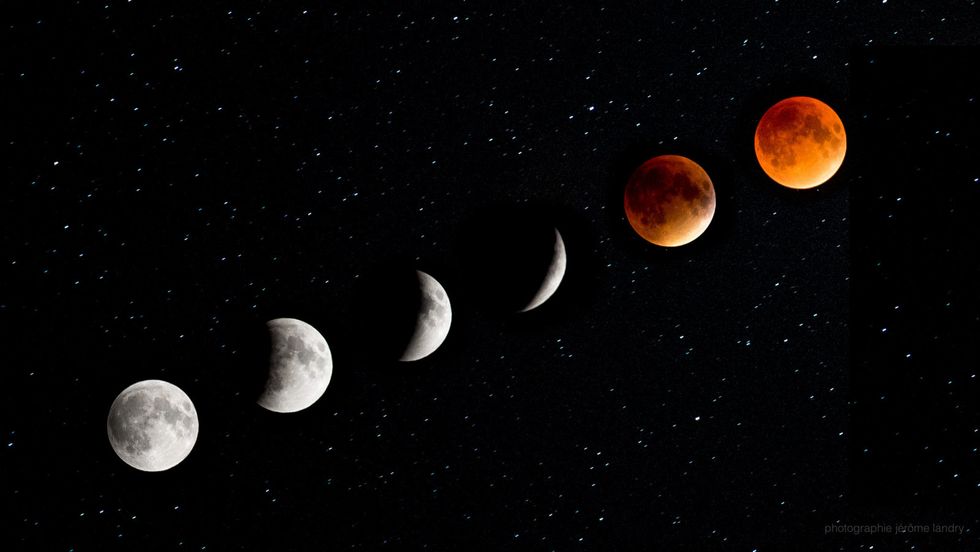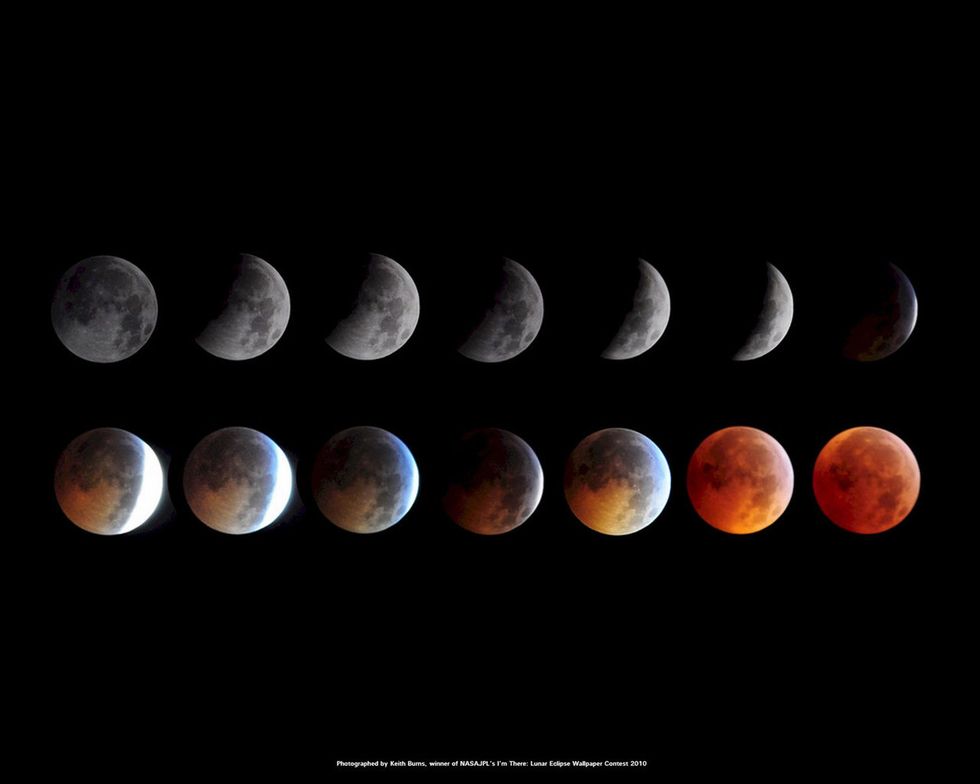We've all heard the colloquial phrase "once in a blue moon"; but what exactly is a blue moon, and how many times have we seen a blue moon take place during a lunar eclipse? Astronomers tell us January 31st will be our lucky day.
A blue moon is defined as the second full moon of a new year. Full moons approximately occur every 29.5 days, or once a month.
The full moon of January 31st will be especially rare due to the fact that it will take place during a lunar eclipse. A lunar eclipse is known as the time where the Earth's shadow blocks the sunlight from reflecting on the moon, as all three heavenly bodies are perfectly aligned.
According to NASA, people across the globe will be able to simultaneously experience both a blue moon sighting and a lunar eclipse sighting in the night's sky. This double astronomical phenomenon will be the first of its kind in over 150 years.
As Space.com has explained, the blue moon lunar eclipse will not be visible to everyone in the US at the same time. In US Mountain Time (MST), the eclipse will start at 4:48 AM. For Eastern Time (EST) in America, the eclipse will begin at 6:48 AM.
Along with a blue moon and a total lunar eclipse, the moon will also be a supermoon on January 31st, also known as a new moon that is the closest distance to Earth in its elliptic orbit, making it appear larger than usual.
Whether you're into the science behind astronomy or just the aesthetics, the blue moon lunar eclipse is something to look forward to start off the new year. Don't forget to tune into your local sky on January 31st to catch the show!



















